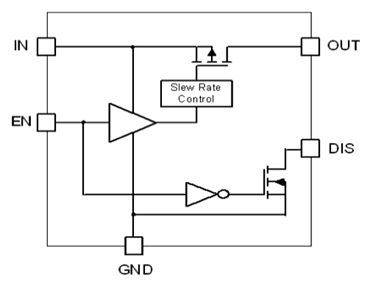电源效率如何为远程监控和管理(RMM)实现低成本感测

作者:Tu Bui,系统应用经理
我们周围的传感器数量大幅增加,收集着所有可以想象到的数据,例如温度、湿度、运动、振动和光照水平。
这些传感器当然都需要供电,而这绝非易事。在远程监控和管理(RMM)应用中,我们需要传感器尽可能持久地从电池中获取电力。如果传感器足够高效,甚至可以由能量收集供电,这意味着无需更换电池。
因此,在RMM、汽车和IoT领域,设计工程师正在寻找功耗尽可能小且能够实现小巧、可靠解决方案的传感器。
虽然有很多问题需要考虑,但最重要的问题是待机电流。在睡眠或关机状态下,传感器或其他设备的功耗是多少?如何尽可能减少功耗?
负载开关解决方案
为了减少待机功耗,最佳方案通常是在不需要时,隔离传感器、其他元器件或子系统。这可以通过负载开关实现,这种开关能在小巧的封装中提供灵活的解决方案。
负载开关是一种用于打开和关闭电源的电子开关。Diodes 公司(Diodes)的AP2280就是一个基于P通道MOSFET的负载开关(图 1)。AP2280启动时,使用EN引脚导通MOSFET,电流就可以从IN引脚流向OUT引脚。

图 1.AP2280方框图
另外,使用负载开关断开电源并隔离子系统,有助于提高安全性,并在电源排序和启动/断电方面提供更大的灵活性。
组合:负载开关和转换器
让我们来看负载开关如何与电源转换器搭配使用,从而最大限度减少损耗。举例来说,Diodes的AP72250是一款高电流同步升压转换器,提供0.6V至5.5V宽输入电压范围内的高效率、出色的瞬态响应和高达5.5V的高输出电压。
AP72250支持900kHz开关频率和20μA静态电流(IQ)。对于许多应用来说,20μA的静态电流已经足够低,由此产生的损耗可由應用中的電源提供。
不过要是增加一个负载开关,静态电流还能更低。事实上,将AP2280负载开关与AP72250搭配使用,闲置时的静态电流可低至4nA。
这个微小的IQ数值意味着即便是更小或更低容量的电池,也可以为感测电路提供足够多的能量——例如,只需一枚钮扣电池就可以为一个传感器供电多年。
除了出色的电源效率,组合而成的电源系统还足够小巧,适用于可穿戴、物联网和RMM应用。AP72250采用小型WLCSP-12封装,尺寸为1.75mm x 1.35mm x 0.45mm,而AP2280则采用SOT25和DFN2018-6封装。
卓越的效率和小巧的尺寸相结合,使得设计人员能够使用小型、长寿命的电池打造紧凑的传感器系统,从而降低整体成本,并最大限度减少实际应用长期维护。
所有商标均为其各自所有者的财产。
© 2025 年,Diodes 公司。版权所有。
